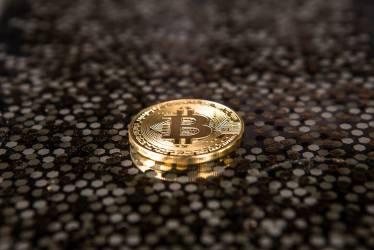Cardano (ADA) is trying to compete with other projects for the status of Ethereum's main rival. Although in terms of capitalisation Charles Hoskinson's 'baby' has given way to younger rivals technologically it can still compete with the most modern crypto projects. Hoskinson has a powerful background in programming and, together with Vitalik Buterin, built Ethereum from scratch. However, he left that project in 2014 to focus on creating and refining rival cryptocurrency Cardano. Recently, Cardano 'whales' (large holders) have doubled their wallets and the number of blockchain-locked tokens has reached historic peaks. This may indicate a potentially growing reluctance to sell Cardano at current price levels, especially given the sharp network growth.
In 2022, Cardano wants to focus on scaling issues - lowering network fees (aka 'gas fees') and speeding up transactions. The fees on the network are still low, measured in cents however the competition has already gone several steps further. At the moment Cardano can process 250 transactions per second, which makes the cryptocurrency faster than ETH tokens or Bitcoin, but slower than some modern altcoins like Polkadot or Terra.
It is also worth mentioning that the cryptocurrency, unlike Ethereum or Bitcoin, was built from the beginning with an eco-friendly, advanced 'proof-of-stake' transaction approval model so it does not attract criticism from environmentalists. The BTC or ETH method known as 'proof-of-work' was debated in the EU on Monday and some representatives wanted to impose a ban due to high energy consumption. Of course,no such action has been introduced, but we can expect, these issues will surely be raised in the future as the crypto industry grows and the full migration of ETH to 'proof-of-stake' is still in question.
The planned Cardano 'Hydra' update is expected to make Cardano the world's fastest blockchain with 1,000,000 possible transactions per second. In comparison, Visa is currently able to process 65,000 transactions meaning that potentially Cardano will overtake Visa with ease. The high 'throughput' and speed of the network could prove crucial if ordinary people start using cryptocurrencies on a larger scale, making transactions both in the virtual space of the 'Metaverse' and the real world.
Also developers working on new Cardano-built applications and another network upgrade known as Vasili is scheduled for June 2022. This is expected to be a hard fork that will enable 'pipelining' to speed up the block distribution process and allow developers to make dynamic, aggressive changes that will augment the entire Cardano system.
More than 500 projects are currently being built within the Cardano system, including collections of popular non-transferable tokens (NFTs), DeFi (loans, financial solutions), play-to-earn platforms and projects related to the transformation to the virtual space known as Metaverse. Hoskinson is also developing his vision for cryptocurrency adoption in Africa and providing a range of blockchain solutions there (including in the security or identity industry).
According to Hoskinson, cryptocurrencies (thanks to 'smart contracts' technology) may accelerate the financial and social 'revolution' in Africa and help societies get out of financial distress and sometimes poverty. Some African countries such as Ethiopia have already established partnerships with Cardano. Due to the lack of trust in state institutions in Africa, the high number of frauds, the problems of regulators and the crawling banking system, blockchain solutions could theoretically be adopted faster than in developed Europe or the USA. One example is Nigeria, which has seen impressive peer-to-peer cryptocurrency transactions between people for many years.
Despite the high ambitions and hard work of IT specialists, Cardano is characterized by high volatility and a still uncertain future. Despite Hoskinson's interesting visions and a strong community, its price has not resumed its upward move and is currently trading below the psychological resistance at $1.00.
Cardano chart, D1 interval. The Cardano price has been moving in a downtrend since early September, 2021. In recent months price fell from high at $3.10 and reached a local low on February 24 near $0.75. The price is moving in line with Elliott wave theory, but the downtrend may be exhausting. This gives hope for a potentially imminent rebound and the occurrence of a A-B-C corrective structure. If this is the case, the nearest major longer term resistance is located around $1.64. At the same time, the $1.00 level acts as an important psychological boundary. Source: xStation5
Daily summary: Markets Show Slight Optimism Despite the U.S. Shutdown
Crypto news: Cryptocurrencies gain amid improving sentiment on Wall Street 📈
Technical Analysis: Bitcoin (07.11.2025)
Crypto decline amid weak sentiments on Wall Street 📉
This content has been created by XTB S.A. This service is provided by XTB S.A., with its registered office in Warsaw, at Prosta 67, 00-838 Warsaw, Poland, entered in the register of entrepreneurs of the National Court Register (Krajowy Rejestr Sądowy) conducted by District Court for the Capital City of Warsaw, XII Commercial Division of the National Court Register under KRS number 0000217580, REGON number 015803782 and Tax Identification Number (NIP) 527-24-43-955, with the fully paid up share capital in the amount of PLN 5.869.181,75. XTB S.A. conducts brokerage activities on the basis of the license granted by Polish Securities and Exchange Commission on 8th November 2005 No. DDM-M-4021-57-1/2005 and is supervised by Polish Supervision Authority.


